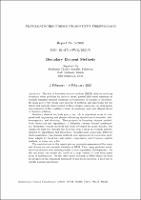Abstract
The field of boundary element methods (BEM) relies on recasting boundary value
problems for (mostly linear) partial differential equations as (usually singular) integral
equations on boundaries of domains or interfaces. Its main goal is the design and analysis
of methods and algorithms for the stable and accurate discretization of these integral
equations, the data-sparse representation of the resulting systems of equations, and their
efficient direct or iterative solution.
Boundary element methods play a key role in important areas of computational engineering
and physics addressing simulations in acoustics, electromagnetics, and elasticity. Thus
progress in boundary element method, both theoretical and algorithmic, is definitely
relevant beyond mathematics. Boundary element methods had been developed for many decades,
but during the past two decades the field has seen a surge in research activity, spurred
by algorithmic and theoretical breakthroughs concerning BEM for electromagnetics,
time-domain methods, new approaches to eigenvalue problems, adaptivity, local low-rank
matrix compression, and frequency-explicit analysis, to name only a few.
The contributions in this report give an impressive panorama of the many and diverse
current research activities in BEM. They range profound mathematical analyses with
striking results to new algorithmic developments. On the one hand, the results are based
on a large variety of tools from many areas of mathematics. On the other hand, research in
BEM blazes the trail for progress in the numerical treatment of non-local operators, a
field that is rapidly gaining importance.

